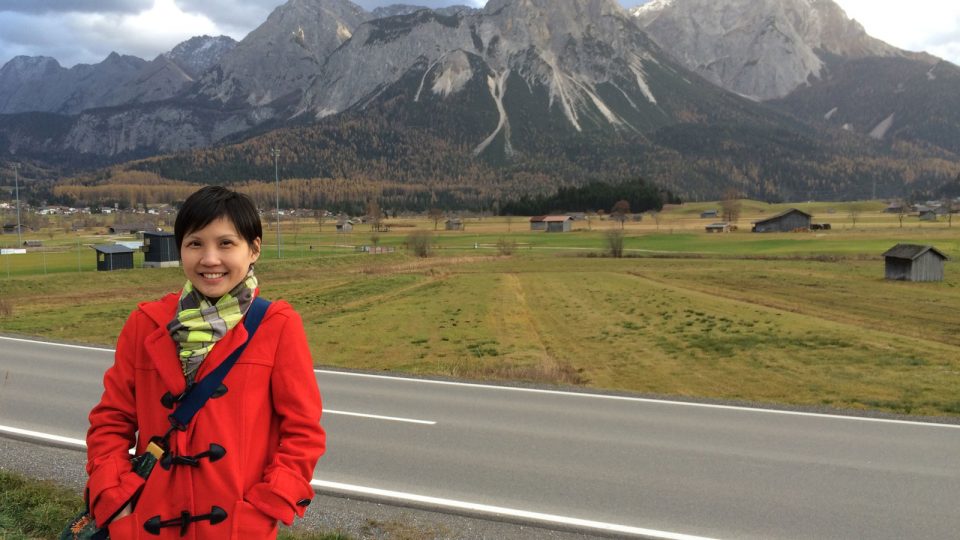Clancie Ng is an unabashed idealist. She believes in the goodness of people, thus her heart found the cause that matched her passion for running: Runninghour, a nonprofit serving Singapore’s special needs population.
At first, she volunteered so much, she overdid it, but these days, her life is the picture of balance and satisfaction borne of helping those who need it most.
RS: Society tends to ignore people with special needs. What is Singapore doing to help?
Clancie: There are many big-hearted, unsung heroes here in Singapore working to help this community. Among the most dynamic are the Association for Persons with Special Needs serving those with intellectual challenges, The Society for the Physically Disabled, Singapore Association of the Visually Handicapped, Down Syndrome Association and Metta School for those with mild intellectual disabilities, autism and similar diagnoses.
As a society, we don’t do a great job advocating for these people, but I believe that a little time, money and commitment can go a long way!
RS: What is required of a runner who wants to be a Runninghour guide?
Clancie: Good communication skills is number one if you’re working with the visually challenged because they depend upon every word you say and the way you move. We use a tether or towel so with each tug, pull or nudge, they understand the direction we’re taking.
We are their “eyes,” which means we must learn to be highly aware of situations and speak faster than we move to keep them safe. When we work with intellectually-challenged people, a lot of patience is required, especially if they’re chatty once they get comfortable with us!
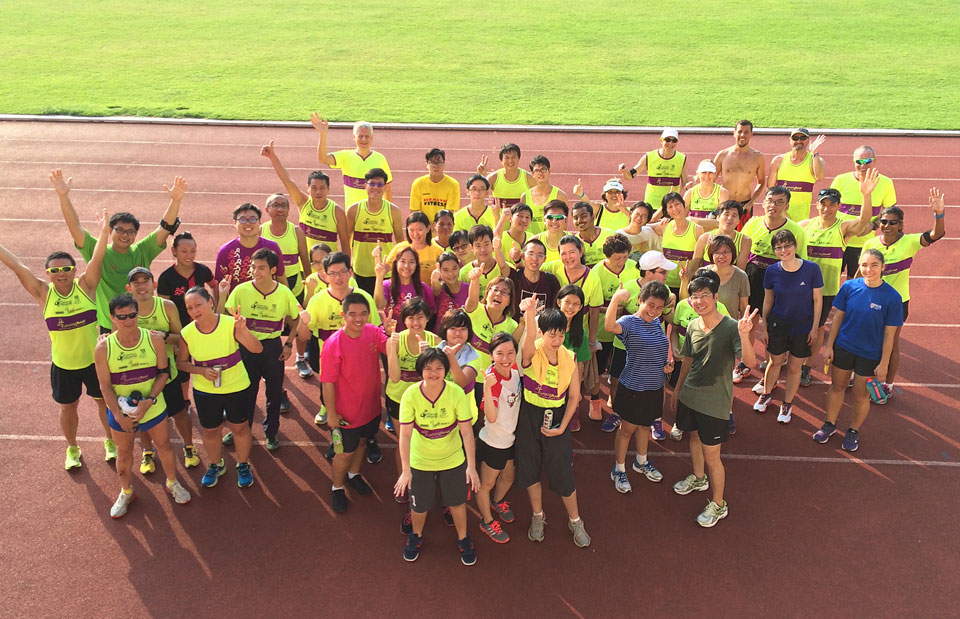
RS: How do you build trust with intellectually- or visually-challenged runners?
Clancie: First, you must allow enough time to build the relationship because everyone is different. We don’t choose the client we are paired up with, so we may partner with a different run buddy each session.
I make an effort to talk to them all, even if I am not guiding them. It is not easy to earn trust, so I move slowly as I let them know I’m their friend and intend to be around a while to help them. As a matter of fact, consistency is often the key to earning their trust because so many people come and go in their lives.
RS: Has anything unexpected happened during one of your guided runs?
Clancie: With the exception of bumping into a few visually-challenged runners, I have not had any personal experiences thus far and I hope I don’t in the future! The key to avoiding such instances is to keep in mind that we are running as two people, not one.
I continually focus on the landscape to make sure there’s always sufficient room on the run course to accommodate both of us. Incidents can be triggered by mis-gauging space or “a Speedy Gonzales” heads in our direction and there’s not enough time to avoid a collision.
On a serious note, we always have guides on hand who are first-aid trained and certified guides for the visually-impaired. During night runs, we use blinkers and torchlights to keep everyone — including pedestrians — safe.
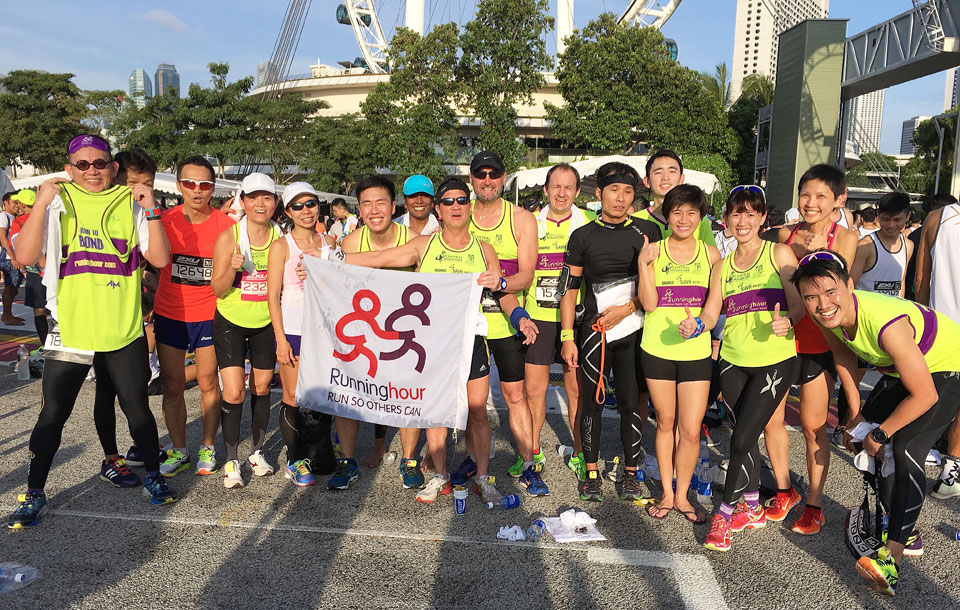
RS: How do you balance work, life and your commitment to Runninghour?
Clancie: I join the session after work (Tuesday and Thursday) around 7 p.m. at the Sportshub. I also do a Saturday session around 7:30 a.m. at various locations. At first, I over-volunteered; I took every single session until I realised my own training and other aspects of my life were suffering, so I cut back.
I had to learn to respect my own priorities, but because I’m committed to the cause, whenever time permits, I’m there.
RS: Can you share with us a story that touched you most as a Runninghour volunteer?
Clancie: One of the most memorable occurred during my first time guiding a client who was bubbly and sociable. We were running/walking along the Toa Payoh Stadium track when she confided in me her innermost fears and told me things she had never before talked about.
She felt safe and trusted me. That brought tears to my eyes; at that moment, I learned the definition of total trust and I know other volunteers feel the same way.
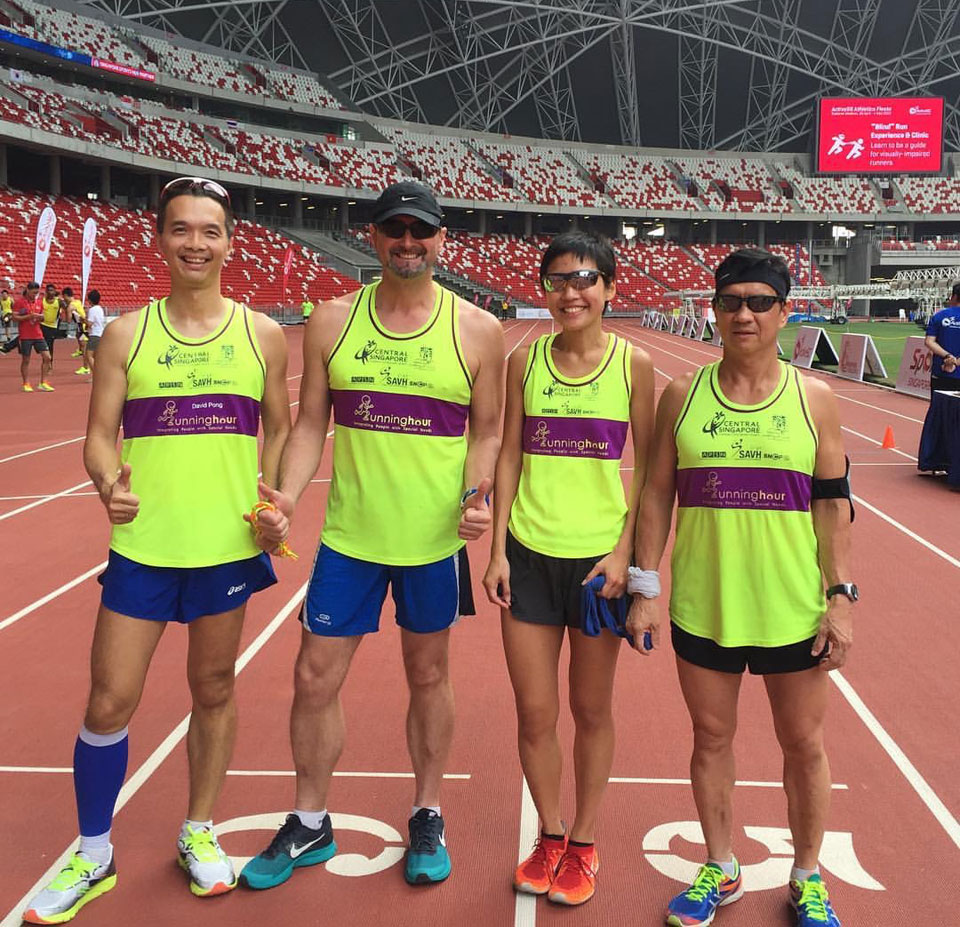
RS: Are co-operatives like Runninghour impacted by the depressed global economy?
Clancie: There are a large number of running events in Singapore, so competition is stiff. For example, at our Runninghour2016 event, the sign-up rate was lower than expected and that was attributed to the fact that there are many more race events now than in the past.
People are more selective of how they spend their money. That stated, our dedicated team of committee members secured very generous event sponsorships, reinforcing my belief that those with kind hearts are happy to help. Our sponsors definitely have big hearts!
RS: Does Runninghour focus only on guided running activities with clients?
Clancie: Oh, we do a lot more! In May, 60 of us did the Spartan Race (Sprint Category) to demonstrate our strength and teamwork. Visually- and intellectually-challenged runners joined us so we had a ratio of two guides to one client as we conquered obstacles together.
We cheered and encouraged each other, shedding tears of joy at the finish line. Back in March, we took part in the NTU Bike Rally. Visually-challenged clients rode tandem with their guides, and it was such a hot day, we all got sunburned! We’re always looking for new challenges we can introduce to our runners.
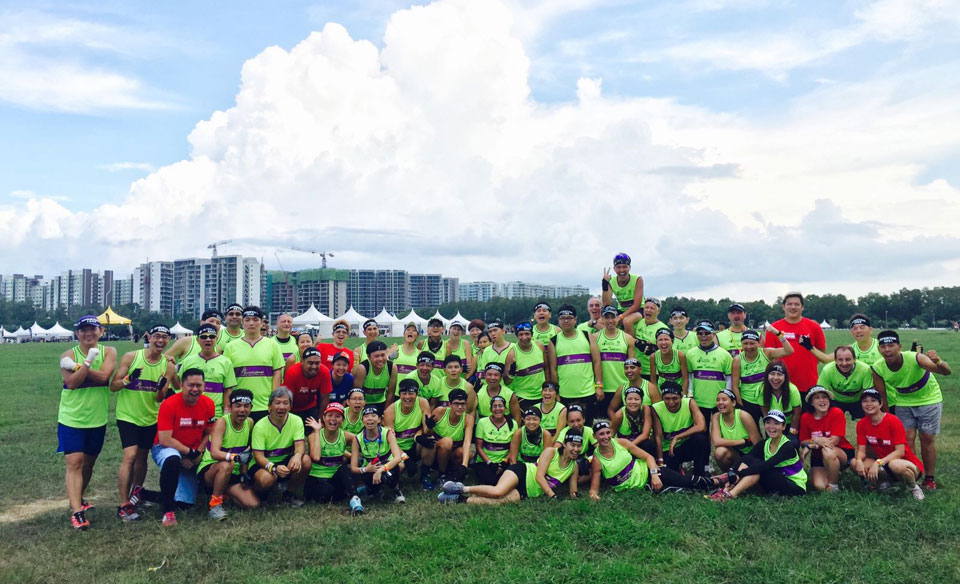
RS: If you could do one thing to change the world, what would it be and why?
Clancie: I wish people were more accepting and compassionate. Every day, I read about animals being tortured or killed, people of different races, religions or beliefs condemning each other, and I ask myself “Why? Why are they doing that? Wouldn’t it be a more loving world if people weren’t so self-centred?”
I believe that compassion and values can be instilled in people by parents and educators if they start early enough.
RS: What can the public and community do to help Runninghour and those you serve?
Clancie: I always suggest using social media to spread the word about our efforts and services. Offer financial assistance if you can’t volunteer — small amounts help, especially small monthly donations. Do the math: If one person gives $20 a month that’s $240 a year.
If 100 people give $20 monthly, that will be $2,000 a month, that helps pay caregivers, buys school supplies and funds technology to help people with special needs. It’s also important to educate children when they’re young so they learn to accept those who are less fortunate, and volunteers are always needed who will commit.
What’s my secret to remaining committed to Runninghour? Find a cause that speaks to your heart and you won’t walk (or in my case run) away from it! I know I haven’t.
Runninghour 2016 is on 10 July 2016 at Angsana Green, East Coast Park. If you would like to contribute, do sign up for this event.
Have you found a philanthropic group that captures your heart and mind? What was there about that group that attracted you to it?


